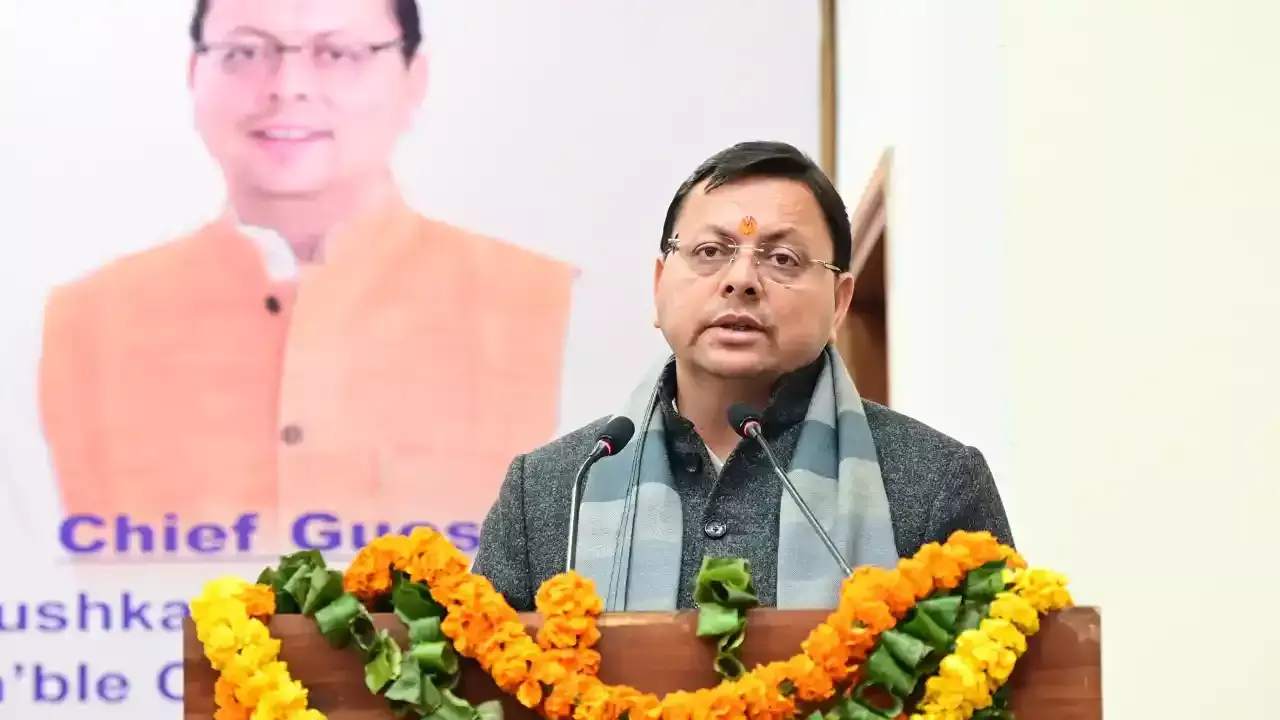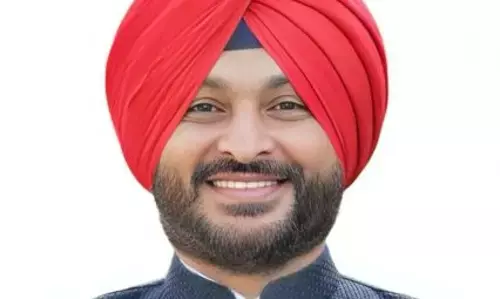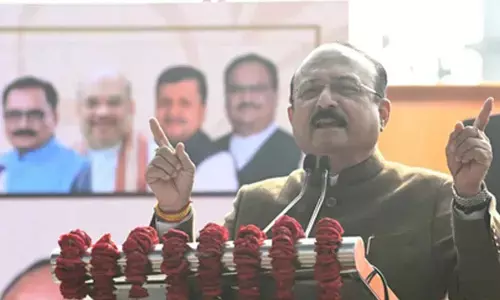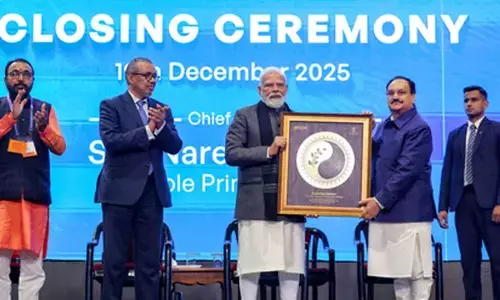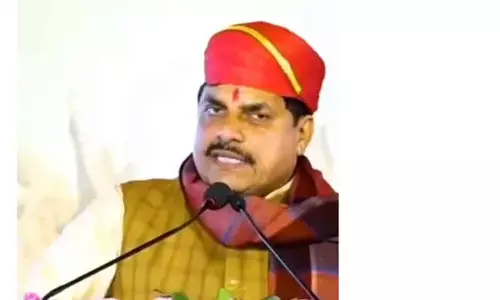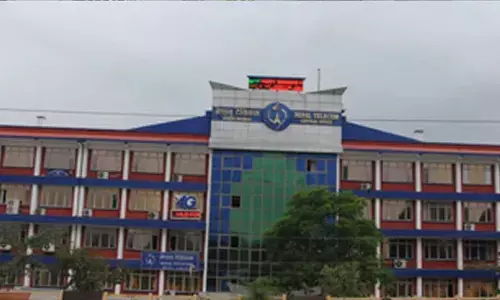Government to view Tourism as a Business Module- A need of the hour!

Tourism over the years has been making rapid strides across the world In the yesteryears tourism was a sheer source of entertainment But in contemporary times tourism has proved to be a life changing bustle
Tourism over the years has been making rapid strides across the world. In the yesteryears tourism was a sheer source of entertainment. But in contemporary times tourism has proved to be a life changing bustle. This shift predominantly has been for a simple reason that the life style of people has undergone a massive paradigm shift. Technology has pushed man towards a closed room enjoyment. His personal life and physical movements are drifting away from him, which have seen a serious toll on health issues. Tourism today has occupied a very important situate in the lives of people as a ‘Stress buster’, especially for those working in the High Stress level sectors like the BFI (Banking, Finance, Insurance), Software, Marketing etc., It is here that tourism comes to the rescue of such individuals who can plan a few days off from the din of their work and travel to places of peace and tranquility.
A Hongkong based Tse, Tony S M of The school of Hotel and Tourism Management, Hongkong, conducted a study on “Does Tourism change our lives”. Tourism psychology research is mostly concerned with tourist motivation, behavior in and satisfaction with destination and how tourism might affect people's perceptions of themselves, home, neighborhood, work, friends, relatives, and life in general. The study seeks insights into the effect and influence of travel and tourism on people, not momentary impact during vacation, but long-term impact in terms of sense of being, direction in life, and well-being. There is clear evidence that travelers feel more positive than non-travelers in their general well-being, attitude toward life, sense of control, and outlook.
The above study reveals that Tourism has become a necessity of life. Statistics also show an upsurge in the number of travelers, globally. For eg., International tourists’ arrivals figure rose from 531 million in 1995 and 1141 millions in 2014 to 1326 millions in 2017 (World Tourism Barometer-2018). Earnings through tourism grew from 487 billion Dollars in 1995 to 1340 billion Dollars in 2016 (WTO Tourism Highlights -2018).
According to the figures of World Tourism Organization-2017, the Gross National Product rose to 10.4% in 2017, while the employment generation was recorded as 10%. The significance of tourism is that every one-out-of-ten is getting employed. In terms of investments, in 2017 tourism’s kitty was flooded with approximately 882.4 billion dollars which amounted to 4.5 % of the total investments of all the sectors put together in the world. These figures are enough to understand the importance of tourism sector in the development of the economy.
Keeping in view Tourism’s contribution to economic development, countries like Indonesia, Singapore, Thailand, China, USA, France, turkey have turned their attention towards tourism as a key contributor towards socio-economic development. Tourism was once viewed as a bridge between various countries to put on view their respective traditions and cultures. But since the last decade, tourism is being seen as a revenue generating industry and is being festooned in a way to attract tourists from across the seas to boost foreign exchange earnings. In this direction, the process for tourist ingress is also being simplified.
Indian tourism took a giant leap during 1982 when the then ruling government realized the need to perk up Tourism industry and came up with a ‘Tourism Policy’. In 2002, Prime Minister Late Shri. Atal Behari Vajpayee formulated a ‘National Tourism Policy’ to keep pace with a tourism revolution sweeping the world. Atlaji stated “Tourism is a major engine of economic growth in most parts of the world (Ministry of Tourism Annual Report-2017). Several countries have transformed their economies using the tourism potential to the fullest. Tourism has great capacity to create large scale employment of diverse kind – from the most specialized to the unskilled and all of us know that generation of massive productive employment opportunities is what India needs the most". The present government led by Shri. Narendra Modiji promulgated a National Tourism Policy 2015 draft. Many aspects of Modi’s vision like Swachh Bharat, International Yoga Day and Skill Development are part of the draft policy.
The inherent idea of the draft policy is not only to take India from being a spiritual hub to a honeymooners’ paradise, but everything that may fall between these two destinations to promote India as a “Must Experience” and “Must Revisit” destination and to Increase India’s Share in World Tourist Arrivals from the present 0.68% to 1% by 2020 and then up to 2% by 2025. The policy will give something for everyone -Spirituality, Leisure, Medical and Rural tourism, Ayurveda and Heritage. The policy also laid emphasis on tourist attraction, security and swachatha and initiated implementation of e-Tourist Visa on Arrival enabled with Electronic Travel Authorization (ETA).
“In 2014-15 Ministry of Tourism (MoT) launched the Swadesh Darshan Scheme under which 500 crores were spent for integrated development of theme based tourist circuits in the country. Various theme based tourist circuits like beaches, culture, heritage, wildlife etc. were to be developed in a manner that support communities, provide employment and foster social integration without compromising on the environmental concerns and tethered with unique experiences to the tourists”. In continuation to the efforts of tourism development, Government of India under the PRASAD (Pilgrimage Rejuvenation and Spiritual Augmentation Drive) scheme spent a whopping 200 crores, to identify and develop pilgrimage tourist destinations on the principles of high tourist visits, competitiveness and sustainability to enrich the religious tourism experience.
Despite all these efforts, tourist arrivals into India are as low as 1.8 % and stand at 25th place globally (Indian Tourism Statistics -2017). Similarly the revenue earnings are also at the lowest ebb of 1.88% only and stand at 13th place. In comparison to other countries, India’s Tourism contribution towards GDP is 9.4 %, while Singapore is 10.2%, Malaysia 13.4%, China 11%, Turkey 11.6%, and Thailand 21.2% (Travel & Tourism Economic Impact, 2018).
Regardless of having 7,517 Kilometers of seaway, exquisite historical monuments, natural beauty and many of such splendid attractions and tourism resources, our GDP compared to other countries, is at a stunning low. When small countries are able to have big foreign exchange earnings, why is India limping behind. The reasons are galore.
One most important reason is that Tourism is not looked at as a business entity in India. We are limiting it as a window to our rich cultural heritage and civilization. We are not able to recognize a tourist as a customer. The government machinery has no awareness of the tourist’s needs, the kind of places he desires to visit, his expectations as a tourist etc. In addition to this the government is spending all the money on the existing developed tourist places and is not exploring new areas to be developed as tourist destinations. Foreign tourists view India as only a pilgrimage or heritage destination. This has narrowed down the foreign tourists’ perception about Indian tourism and the REVISIT CONCEPT has been denigrated. Governments’ lethargic approach towards such negated effect is yet another stumbling block to tourism growth in India. Hundreds of crores of rupees are being spent in the guise of Yoga tourism and rural tourism. In reality the mindset of the government has to change in this direction to control revenue losses. Government machinery should focus more on Leisure tourism as India is the ultimate leisure destination in South Asia and the world itself.
Leisure Tourism provides the tourists of national and international arena with luxury rides, adventure, thrill and excitements. Our ancient India portrays a landscape of vibrant cultural heritage and spiritual mysticism is a great attraction, especially for the foreign tourists. Leisure Tourism in India covers the delightful tourist destinations like Rajasthan, Madhya Pradesh, Delhi, Ladakh, Leh District, Kerala, Karnataka, Goa, Andamans and Nicobar Island and Lakshadweep Island. Leisure Tourism also facilitates huge revenue earnings. According to the World Tourism Council, 65% of the world’s tourists are looking at leisure tourist destinations. Countries like Singapore, Thailand, Indonesia, America etc., stand first in the revenue earnings due to their focus being more on Leisure tourism. The one and only reason why Tamilnadu ranks first in the number of tourists visiting both domestic and foreign tourists is due to leisure destinations like Ooty and Kodaikanal. Tourists spend more on Leisure destinations compared to Historical destinations. A recent study has revealed that if tourists visiting Golconda fort spend around 1000, the same tourists spend 3000 rupees at Lumbini Park (Kristiah-2017).
In the coming years, the government should perceive Tourism as a vehicle to earn foreign exchange instead of limiting it to a service industry. In this backdrop, Government should view Tourism as a Business module rather than sociological. Only then tourism in India will gain momentum and forge ahead as a profit-making enterprise. It’s time that India wakes up in this direction.
References
- World Tourism Barometer, (2018): “United Nations World Tourism Organization Report”, Vol. 16, Advance Release, January- 2018.
- Tourism Highlights’, (2018): “United Nations World Tourism Organization Report”, 2018 Edition.
- Kristiah, (2017): “Tourist Behavior in Telangana” a Ph.D. thesis submitted to Osmania University, Hyderabad.
- Indian Tourism Statistics, (2017): Ministry of Tourism.
- Annual Report, (2016-17): Ministry of Tourism.Travel & Tourism Economic Impact, (2018): World Travel & Tourism Council.








